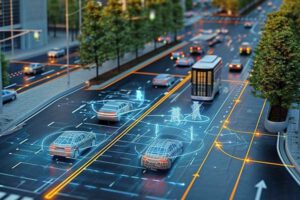No one is protected from car accidents. It happens at all hours, on roads, and in cities. In every sector and gender, no one is exempt from it. Still, some are much more vulnerable than others.
In the last decade, there has been a sharp increase in the number of senior citizens killed and injured on the roads in Israel.
Why is that, and how can we change it? In the following article.
The global war against road accidents is at its peak, with international programs such as Vision Zero and the 50 to 30 plan, which aims at a significant reduction of road accidents through the improvement of infrastructure, the implementation of technologies, education, supervision, and information. The war against road accidents is a brutal war that has so far claimed the highest number of victims in Israel among all the wars the country has known altogether. And the number of senior citizens among those killed in traffic accidents is significantly higher than other age groups.
According to the National Road Safety Authority (NRSA), senior citizens (65+) are the most vulnerable age group of all pedestrians in Israel. Their injury has several key characteristics: First, they are most often injured during the day, mainly near their home or close to a shopping center. In addition, their involvement in accidents occurs primarily in places where the traffic is complex, such as intersections (mostly not signposted) and multi-lane roads, or going up and down from public transportation, as well as in cases where vehicles turn or drive backward.
More than one is killed every week.
Even more worrying is the increasing proportion of senior citizens in the population and the expansion of the dimensions of the danger. 12% of the population today are above the age of 65, and it is estimated that by 2040 it will be 14%, which is about 2 million people more. This has direct consequences on the extent of this population’s vulnerability. An “Or Yerok” report examining road accidents among senior citizens over the past decade noted a 30% increase in the number of fatalities aged 65 and over, which translates to an average of 751 deaths over the past decade, 75 fatalities per year in average, and more than one fatality each week.
One of the main reasons for these alarming numbers is that the aging body absorbs injuries more severely, and the recovery processes are more complex than among young people.
In addition, senior citizen drivers’ and pedestrians’ reaction time is much slower. Hence, it takes more time for them to prepare for a situation like crossing the street, which makes the need for increased patience and vigilance from the drivers, particularly necessary.
In reality, due to lack of attention, driving above the speed limit on intercity roads, ignoring crosswalks and traffic signs, and other distractions while driving, 22% of all those killed in traffic accidents are senior citizens, almost double their share in the population (12%).
“Or Yarok” recommends a series of dedicated measures such as adapting the transit infrastructure for elderly pedestrians, especially in areas where they are more likely to be found, such as city centers, health clinics, parks, and shopping centers, as well as improving information about road safety. In addition, the report’s authors recommend making changes to the means and traffic laws, along with a series of additional conditions that must be addressed.
Indeed, improving the infrastructure and providing the information is essential, but what about changing drivers’ behavior on the roads?
SaverOne harnesses technology to solve the problem
The National Road Safety Authority continues to work tirelessly to strengthen road enforcement and information, but unfortunately, this activity fails to stop the deadly trend or slow it down.
Just this month, “Or Yerok” reported a 31% increase in police reports for drivers who were using their mobile phones while driving. This data illustrates the growing effect of driver behavior on the rise in fatal traffic accidents, especially pedestrian injuries. Trying to manage the problems with enforcement and education is clearly not enough.
SaverOne recently launched the 2nd generation of its system; one of the outstanding advantages of its technology is that it will allow an added feature to the system that will be able to recognize mobile phones outside the vehicle and alert the driver to the presence of pedestrians in the vicinity, even when they are not yet visible to the driver.
Thus, the company’s customers gain a double value – protecting the driver and his environment inside the vehicle by neutralizing the distraction of cell phone use and improving his ability to react in cases of danger to pedestrians in his path of travel outside the vehicle.
Although the system is valid for protection against all pedestrians regarding the vulnerable elderly population – this move becomes significant and required.




